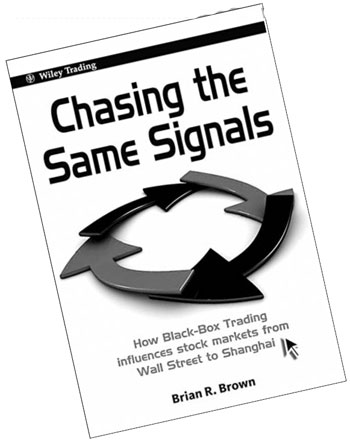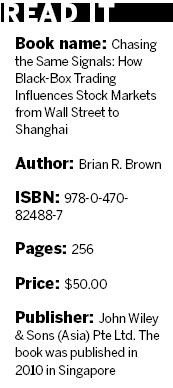The dark arts of black-box trading

The worst stock market crash since Black Monday of October 1987 occurred during the first week of August 2007. But no one noticed. On the morning of August 6, investment professionals were baffled with unprecedented stock patterns: There was a 30 percent gap between the top stocks and the worst stocks, yet the index remained unchanged. Stock prices were all over the charts, but gains one day seemed to evaporate the next. MBI Insurance, a firm that rarely attracted speculation, was up 22 percent on August 6, only to lose 24 percent in the following two days. The markets were suffering whiplash, but the index was unchanged because gains in one sector, offset losses in another. It was the industry's first worldwide panic - by machines that were chasing the same signals.
two days. The markets were suffering whiplash, but the index was unchanged because gains in one sector, offset losses in another. It was the industry's first worldwide panic - by machines that were chasing the same signals.
"Chasing the Same Signals: How Black-Box Trading Influences Stock Markets from Wall Street to Shanghai" by Brian R. Brown investigates how "black-box" (computerized) trading has come of age and the future it portends for global equity markets.
Investors had few insights into the volatility in August 2007. Conventional wisdom suggests that stock prices reflect all known information, but obviously fundamental sentiments can't explain the rapid reversals. The only thing apparent was that a handful of firms, with similar strategies, were capable of dislocating the market. In retrospect, August 2007 should have been the canary in the coal mine, because it was the first sign of the economic imbalances that lay ahead.















